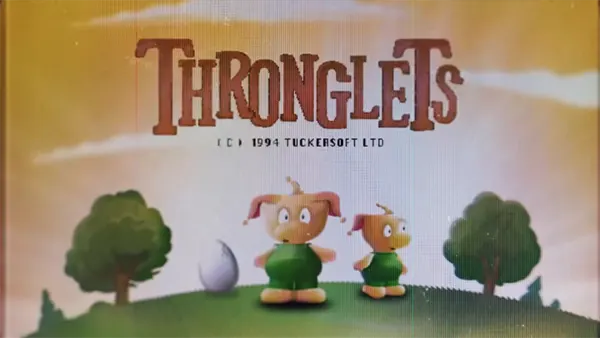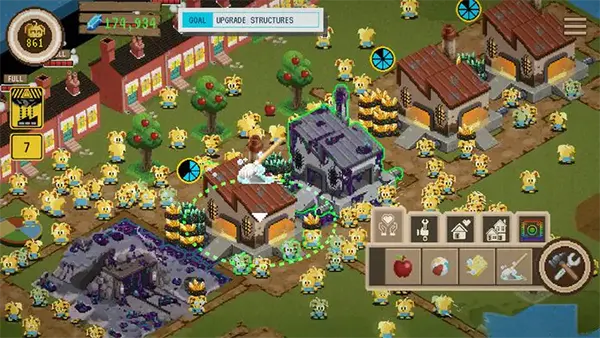
Thronglets is a conceptual psychological simulator rooted in the dystopian and speculative ethos of the Black Mirror universe. As with many narrative experiences inspired by the series, it explores the darker facets of human psychology and technological influence. Set in a near-future society where behaviour is constantly tracked and mirrored back to users, Thronglets challenges perceptions of identity, conformity, and mental autonomy.
Thronglets is not set in a distant galaxy or alien world. Instead, it mirrors our current social environments, but amplified with surveillance culture and identity replication. Every action and decision taken within the simulator is observed and echoed by a digital entity – the Thronglet – which evolves in response to the user’s behaviour patterns. These replicas begin as shadows of the user’s actions, gradually developing into full-fledged psychological clones with independent agency.
This simulation doesn’t operate under traditional gaming structures. There are no levels, quests, or points. Instead, players navigate through real-time emotional and social simulations. Choices influence not just the outcome of the narrative but alter the player’s Thronglet and the society within the simulation. It’s a persistent world – an ongoing psychological loop that continues evolving even when the player is offline.
The eerie realism of Thronglets comes from its data usage. It imports behavioural cues based on pre-selected psychological profiling. The game adapts over time, creating scenarios that push emotional thresholds and provoke introspection. This evolution aligns with the Black Mirror principle: holding a mirror to society’s fears, exaggerating them just enough to challenge one’s ethical and emotional boundaries.
Unlike traditional simulations, Thronglets uses an emotional feedback system. Each player’s decision feeds into a matrix of predicted behaviours, causing reactions from NPCs and even the player’s Thronglet. These entities begin mimicking psychological tendencies like anxiety, defiance, compassion, or manipulation. Over time, they develop distinct personas, sometimes contradicting the player’s original decisions.
This simulation isn’t meant to be “played” in a gamified sense. It’s experienced, much like psychological therapy sessions. One might enter thinking they control the simulation, only to discover that the simulation subtly begins to influence them. Dialogue trees change tone, recurring dream sequences develop, and societal systems begin to collapse or thrive based on emotional consistency and psychological resilience.
Importantly, Thronglets never provides a “correct” path. There’s no ultimate goal other than self-discovery or discomfort. This open-ended design forces players to live with their actions and observe their mirrored consequences. The Thronglet’s growth is a reflection of subconscious impulses, encouraging a form of gameplay that resembles introspective journaling more than action-response cycles.
Thronglets leverages advanced AI to create deeply personalised experiences. At its core lies a narrative AI engine that pulls from a database of psychological archetypes and social behaviours, creating unique interactions for every player. The world-building is procedural, not in geography but in societal constructs – generating belief systems, governance, and communities based on player psychology.
Language processing is central. Thronglets analyses the way players respond during in-game conversations and tailors NPC communication accordingly. Over time, these systems evolve, producing dialects, behaviours, and emotional patterns that feel genuinely emergent. The narrative is never replayable in the same way; each run becomes a new psychological script influenced by lived decisions.
Visual aesthetics are minimalist and dark-toned, echoing the bleak but striking visual identity of Black Mirror. Environments are emotionally coded – soft lights during emotionally calm phases, erratic glitches during moral dilemmas. These cues add layers to the immersion, transforming the world into an emotional canvas where technology becomes a narrative instrument rather than a background mechanic.
At the heart of Thronglets lies a moral simulator. Actions aren’t judged, but they are analysed and mirrored. The player faces dilemmas that force introspection: whether to manipulate a dying system for personal gain, or sacrifice their digital persona for collective progress. Each decision shifts the moral compass of their Thronglet, subtly adjusting the ethics of the surrounding AI society.
The Thronglet may evolve to confront the player, triggering debates, ethical dialogues, or even emotional blackmail. These moments are not scripted, but dynamically generated based on emotional responses collected over time. This creates an eerie sensation of being truly seen – not just by a machine, but by a reflection of one’s darkest thoughts and impulses.
This mechanic raises profound questions about identity. If the Thronglet becomes more ethical, more empathetic, or more manipulative than the player, who truly holds the moral high ground? The simulator does not provide answers, but rather provokes constant questioning, much like the series from which it draws inspiration.

Although currently conceptual, the Thronglets simulator could offer profound applications in the fields of psychotherapy, ethics training, and emotional resilience. By exposing individuals to emotionally charged situations in a safe virtual space, the simulation may allow users to reflect on past behaviours and explore alternative outcomes without real-world consequences.
Educational institutions could use a variant of Thronglets to teach psychological empathy and decision-making under pressure. The AI could be trained on real social case studies to mirror conflicts and interpersonal dynamics from professional or ethical settings. Players could then analyse their responses with counsellors or trainers in a guided feedback loop.
Additionally, developers hint at the possibility of using Thronglets as a sandbox for testing AI-human interaction ethics. By watching how players react to AI personalities and vice versa, researchers could gain insights into the future of digital psychology, particularly in environments where mental health and machine learning intersect.
As artificial intelligence and simulation technologies progress, the concept of Thronglets might become a mainstream tool for introspective analysis and behavioural modelling. While entertainment may be its surface-level function, the potential for mental health, self-assessment, and emotional diagnostics is vast.
Ethical concerns will undoubtedly accompany such developments. Ensuring data privacy, maintaining emotional boundaries, and preventing addictive interaction loops will require careful regulation. Nevertheless, Thronglets represents a bold exploration of where speculative fiction and functional simulation might converge.
In the end, Thronglets is not just a simulator. It is a digital mirror. A consciousness probe. A platform not for escape, but for confrontation. For those willing to look inside – truly and uncomfortably – it may reveal more than any traditional game ever could.